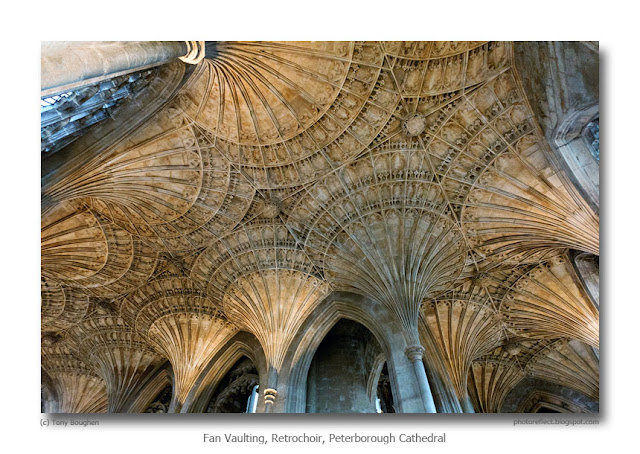click photo to enlarge
The cathedral that I was most familiar with in my younger years was York Minster. From my position of ignorance, I took it as the yardstick against which I measured others. As I came to realise in later years, this was very unfair. Its importance as the seat of one of England's two archbishoprics, its enormous size and wealth, and the setting among the medieval walls, churches, and streets of York, gave it an advantage that few could match. It was only after I moved to the East Riding of Yorkshire, became interested in church architecture, and travelled around England looking at other cathedrals that I realised this. But by then, my eye had been trained and my understanding enlarged, and the subtleties that I began to see in other buildings became as important as York's imposing magnificence.If, today, I were to list the cathedrals (and I include minsters under that heading) that I like best, then I would have to say that my absolute favourite is the often overlooked Beverly Minster in the East Riding for its superb details but also for the uniformity of the nave. This was partly brought about by the conscious decision of medieval builders to carry on with an "outdated" style for the sake of continuity, a practice also followed at Westminster Abbey. Then I would list Durham and Lincoln for the high quality of their details from all periods, but especially for their high and very visible sites that show them off to great advantage, and yes, York for its majesty and the white stone that makes it look, in certain lights like a great ocean liner. Finally I would add Peterborough, a cathedral with which I wasn't very familiar until relatively recently, but one which displays the grandeur of the Norman to perfection in its nave, and has new interest and beauty to be discovered with each visit.
Peterborough also has, in its retrochoir, some lovely fan vaulting dating from around 1500. Today's photograph of part of it was shot as an experiment with my relatively new camera. The 17-40mm lens that I used is not stabilised, so in order to achieve a realistic shutter speed the image was taken at 3200 ISO, a rating that a few years ago would have been unwise, and in the days of film virtually unthinkable. However, this combination handled the job quite well without recourse to a tripod. For another shot of this vaulting, taken in better light with an Olympus DSLR at 800 ISO, see here.
photograph and text (c) T. Boughen
Camera: Canon
Mode: Aperture Priority
Focal Length: 17mm
F No: 7.1
Shutter Speed: 1/20
ISO: 3200
Exposure Compensation: -0.33 EV
Image Stabilisation: N/A
